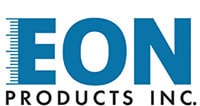Passive sampling for groundwater monitoring at municipal and state-run solid waste sites is gaining traction due to its efficiency, cost-effectiveness, and minimal environmental disruption compared to traditional methods. They are particularly powerful for use in semi-annual detection or assessment monitoring programs.
Advantages of Passive Sampling in Solid Waste Sites
- Broad Capabilities: Passive samplers can sample for entire list of constituents across all mandatory appendices. More recently, they have been adopted for use on many solid waste sites to monitor for PFAS, along with the standard contaminants of concern.
- Reduced Sampling Time: It takes one person 10 minutes to sample each well and there is no set up time or waiting to purge each well. That means less time on hazardous sites and easier scheduling.
- Cost Efficiency: Cut your sampling costs by 50% or more from:
- Labor savings
- No more expensive rentals that drag on for days of sampling
- No IDW = no paying for hazardous purgewater storage
- Representative Samples: Passive samplers can remain in place for extended periods, allowing them to integrate various fluctuations in contaminant concentrations over time, which might be missed during a single pumping event.
Learn how passive sampling can help you with The Ultimate Guide to Passive Groundwater Sampling
